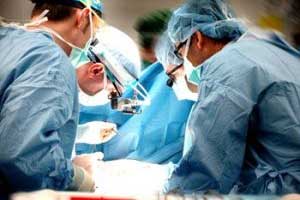- Home
- Editorial
- News
- Practice Guidelines
- Anesthesiology Guidelines
- Cancer Guidelines
- Cardiac Sciences Guidelines
- Critical Care Guidelines
- Dentistry Guidelines
- Dermatology Guidelines
- Diabetes and Endo Guidelines
- Diagnostics Guidelines
- ENT Guidelines
- Featured Practice Guidelines
- Gastroenterology Guidelines
- Geriatrics Guidelines
- Medicine Guidelines
- Nephrology Guidelines
- Neurosciences Guidelines
- Obs and Gynae Guidelines
- Ophthalmology Guidelines
- Orthopaedics Guidelines
- Paediatrics Guidelines
- Psychiatry Guidelines
- Pulmonology Guidelines
- Radiology Guidelines
- Surgery Guidelines
- Urology Guidelines
Guideline on Antibiotic use in patients with abdominal injuries

Korean Society of Acute Care Surgery has released its new guidelines on Antibiotic use in patients with abdominal injuries. A task force appointed by the Korean Society of Acute Care Surgery reviewed previously published guidelines on antibiotic use in patients with abdominal injuries and adopted guidelines for Korea. The guidelines include the indication for antibiotics, time until first antibiotic use, antibiotic therapy duration, appropriate antibiotics, and antibiotic use in abdominal trauma patients with hemorrhagic shock.
Surgical site infection is a common complication after abdominal trauma and is associated with an increase in morbidity, mortality, and hospital stay, and the appropriate use of antibiotics for abdominal trauma is essential in decreasing surgical site infection.
- Patients who require surgery should be administered preoperative prophylactic antibiotics. (1A)
- Patients who do not require surgery should not be administered antibiotics. (1A)
- Antibiotics should be administrated as soon as possible after injury. (1C)
- In the absence of hollow viscus injury, no additional doses of antibiotics are needed. (1A)
- If hollow viscus injury is repaired within 12 hours, antibiotics should be continued for no more than 24 hours. (1A)
- If hollow viscus injury is repaired after 12 hours, antibiotics should be limited to 7 days. (2C)
- Antibiotics can be used for more than 7 days if hollow viscus injury is incompletely repaired or clinical signs persist in patients with a traumatic abdominal injury. (2C)
- Broad-spectrum aerobic and anaerobic coverage antibiotics are preferred as initial antibiotics. (1A)
- Second generation cephalosporins are recommended as initial antibiotics. (1B)
- Third generation cephalosporins are alternative choices. (2B)
- In patients admitted with hemorrhagic shock, the administered dose of antibiotics may be increased twofold or threefold and repeated after transfusion of every 10 units of blood until there is no further blood loss. (2B)
This guideline may be meaningful in that it provides a consensus on the use of antibiotics in abdominal trauma patients in Korea. The guideline will be updated by the clinical research committee of the KSACS every 5 years. Although this guideline was made by adaptation of other guidelines, it may be meaningful in that it provides a consensus on the use of antibiotics in abdominal trauma patients in Korea.

Disclaimer: This site is primarily intended for healthcare professionals. Any content/information on this website does not replace the advice of medical and/or health professionals and should not be construed as medical/diagnostic advice/endorsement or prescription. Use of this site is subject to our terms of use, privacy policy, advertisement policy. © 2020 Minerva Medical Treatment Pvt Ltd